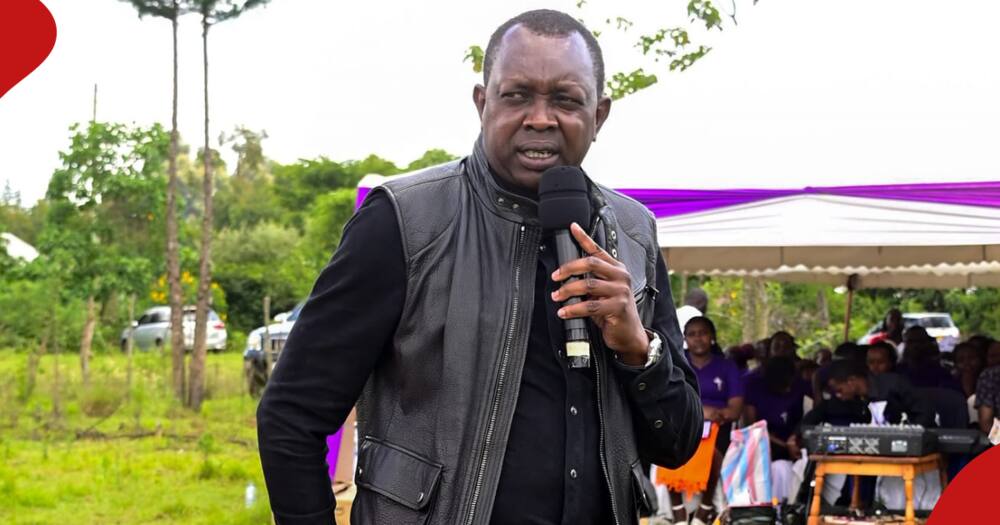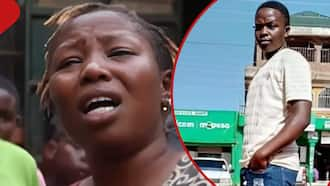- The recent anti-finance bill protests were aimed at toppling President William Ruto’s government, Kapseret MP Oscar Sudi claimed
- He alleged some unnamed civil organisations and individuals were the plotters of the supposed coup
- The restive Kenyan youths forced the president to withdraw the Finance Bill 2024 which they argued had draconian taxation regimes
Kai Eli, a journalist at TUKO.co.ke, brings more than three years of experience covering politics and current affairs in Kenya.
The post-protest analyses by various quarters are now bringing forth assertions and hypotheses implying that Kenya was headed for a political crisis.

Source: Facebook
Kapseret MP Oscar Sudi says the mass action demonstrations were not solely to oppose the moribund Finance Bill 2024 but to overturn President William Ruto’s administration.
Who wanted to overthrow Ruto’s government?

Read also
William Ruto’s Cabinet Lauds Police for Being Professional during Finance Bill Protests: “Good Job”
Speaking in his area at the burial of one of his farmhands, the lawmaker claimed civil societies and other unnamed figures were behind the protests.
The end game was to depose Ruto, according to Sudi.
“What happened recently in Kenya was planned. They wanted to overthrow the government. It was a coup plot. They just used our children as the shield, with the civil societies and other plotters working hard to help the real detractors succeed. But I thank God things calmed and normalcy has returned among Kenyans,” he said.
Sudi’s claims came days after the National Intelligence Service (NIS) listed six prominent politicians, two Non-Governmental Organisations (NGOs), and a businessman as sponsors of the protests that later took violent and destructive turns.
According to the intelligence report, three of the politicians are from Nairobi county, two from Mt Kenya region and one from Rift Valley.

Read also
Johnson Sakaja claims one of goons who burnt City Hall works at MP’s office: “Caught on camera”
The protests climaxed with the invasion of parliament by the protesters on June 25.
How many died in anti-finance bill protests?
Police action in quelling the chaotic scenes led to deaths and injuries.
The Kenya National Commission on Human Rights (KNCHR) indicated that as of Monday, July 1, over 40 deaths and 361 injuries had been documented.
The dead were from Nairobi (17), Nakuru (3), Laikipia (1), Narok (1), Kajiado (3), Uasin Gishu (4), Kakamega (1), Kisumu (2), Kisii (1), Mombasa (3), Siaya (1), Kiambu (1), and Nandi (1).
The commission also documented 32 cases of abductions and 627 incidents of arbitrary arrests.
Following the pressure from the public, Ruto announced the withdrawal of the Finance Bill 2024.
Why did William Ruto withdraw Finance Bill 2024?
He said he had conceded to pressure from Kenyans who had taken to the streets to disapprove of it.

Read also
Anti-Govt Protests: 3 Minors Arrested During Demos Faint in Court, Magistrate Offers Them Milk
Ruto said he had consulted the lawmakers in his faction before realising his decision.
He said he would engage relevant stakeholders in refurbishing the bill’s contents, which had attracted massive resistance from Kenyans.
The president, at the same time, noted corruption was depriving the government of revenue and thus stated his resolve to arrest the vice as he sought to close the revenue shortfalls following the withdrawal of the bill.
Ruto also sanctioned the observation of the austerity measures and budget cuts for the government, calling for the reduction in the expenditures in the National Executive and other arms of the state.
Besides, he expressed readiness to engage the Kenyan young population that engineered the mass action protests to reject the bill believed to bear oppressive taxation measures.
The measures sought to raise over KSh 340 billion, part of which the president said would be channelled toward servicing the public debt.
Proofreading by Asher Omondi, current affairs journalist and copy editor at TUKO.co.ke.
Source: TUKO.co.ke
